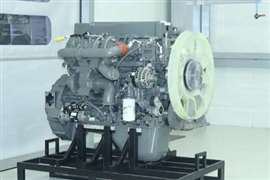Doosan debuts with Wring
25 September 2013

Wring Group is currently working on the site preparations for a temporary campus facility that will house 1,000 workers that will be employed on the construction of two new nuclear reactors at Hinckley Point C power station in Somerset. The site was formerly the home of a British Cellophane factory that was acquired by Innovia Films in 1996 that had lain derelict after the plant closed in 2005.
Wring was brought in to clear the buildings, which it achieved by the end of 2010. The company is now removing the substructures and foundations of the demolished buildings as part of the current land remediation contract. By the end of the work, Wring is expecting to have sorted, recycled and removed more than 250,000 tonnes of material from the site.
Four new Doosan machines are working on the site, with pride of place going to the first Tier4 Final/Stage IIIB compliant 39 tonne DX380LC-3 to be supplied to a UK contractor. It is working alongside three from a batch of six new DX225LC machines also acquired by the company. The DX380LC-3 is powered by a Doosan turbocharged DL08K common rail six cylinder diesel that achieves compliance through the use of DPF and EGR. It offers an 8% increase in torque, delivers 6% more power at 213 kW (286 hp) at a lower rpm of 1,800 when compared with the engine in the previous DX380LC model.






